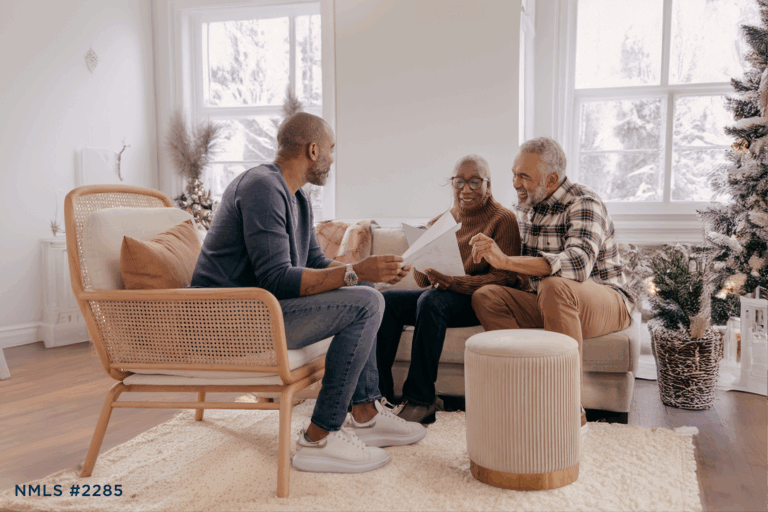[OPENING DISCLOSURE]
For reverse mortgage loans: The borrower must meet all loan obligations, including living in the property as the principal residence and paying property charges, including property taxes, fees, hazard insurance. The borrower must maintain the home. If the homeowner does not meet these loan obligations, then the loan will need to be repaid.
How to Sell a Home with a Reverse Mortgage
Just like with a traditional mortgage, reverse mortgage borrowers are free to sell their home whenever they like. The process is often more straightforward than people expect, and in this article, we’ll explain how it works, what to keep in mind, and answer common questions about selling a home with a reverse mortgage.
What to Know When Selling a Home with a Reverse Mortgage
Selling a home with a reverse mortgage isn’t all that different from selling any other home. Typically, you’ll work with a real estate professional, set a price, and show your home to potential buyers. If your home sells for more than what you owe on your loan, you keep the remaining proceeds.
That said, there are a few important steps to follow. Here are five key things to keep on your to-do list:
- Notify your lender. Let your reverse mortgage lender know you plan to sell. They’ll provide an official payoff statement that includes the balance due, along with any interest and fees.
- Get an appraisal. If your loan balance is higher than the estimated value of the home, your lender may require an appraisal to help determine the payoff process. Even if it isn’t required, getting an appraisal is often a smart step when preparing to sell.
- Consider hiring a real estate agent or attorney. They can guide you through the selling process and help ensure everything is handled correctly.
- List your home for sale. A real estate agent may suggest updates, schedule open houses, and show the home to buyers.
- Close the sale. Closing works much like it would with a traditional mortgage. The proceeds are first applied to pay off the reverse mortgage loan, and any remaining funds are yours to keep.
FAQs About Selling a Home with a Reverse Mortgage
Q: Are there penalties for selling a home with a reverse mortgage?
A: No. You will not be penalized or charged additional fees just for selling your home. Standard closing costs and transaction fees may still apply, but you won’t face additional charges just because you’re selling with a reverse mortgage. The only requirement is that the reverse mortgage must be paid off at the time of the sale.
Q: If my home isn’t worth as much as I owe on the reverse mortgage when I sell, can I simply walk away?
A: In some cases, you may be able to satisfy the loan through a deed in lieu of foreclosure, which allows you to transfer ownership of the home back to the lender instead of going through a foreclosure process. This option requires lender approval and may depend on your situation.
Final Thoughts
Selling a home with a reverse mortgage is often more straightforward than many homeowners expect. The key is understanding your responsibilities, keeping your lender informed so you can move forward with confidence.
[CLOSING DISCLOSURES]
This article is intended for general informational and educational purposes only and should not be construed as financial or tax advice. For more information about whether a reverse mortgage may be right for you, you should consult an independent financial advisor. For tax advice, please consult a tax professional.



